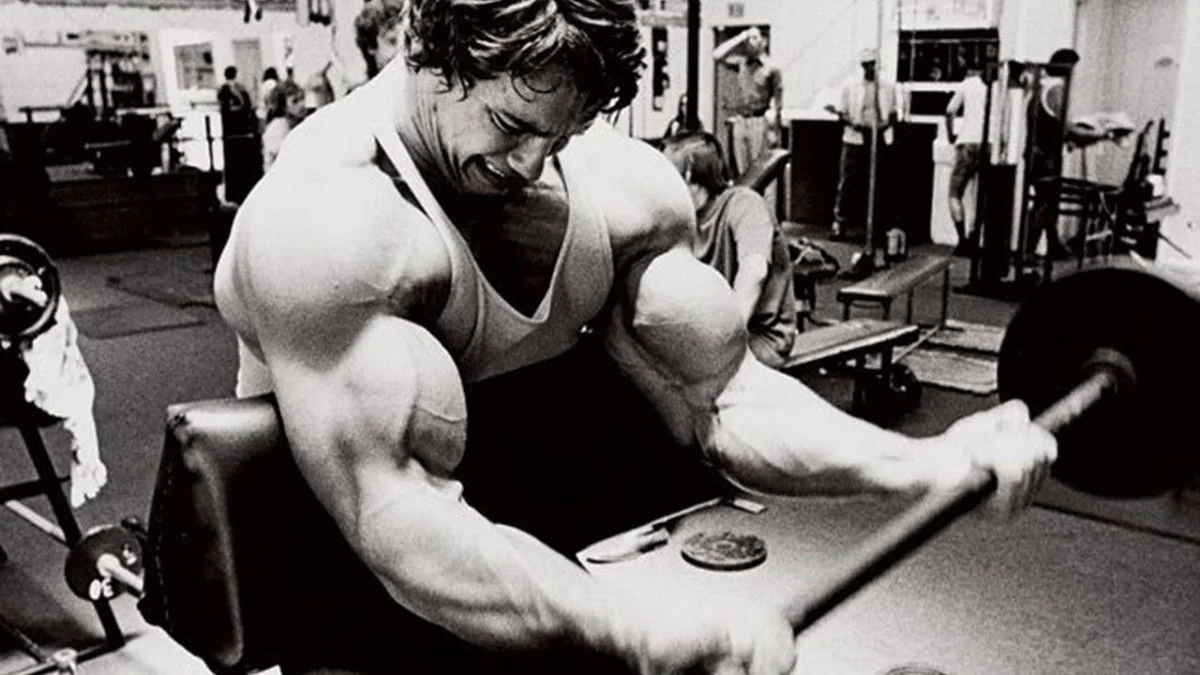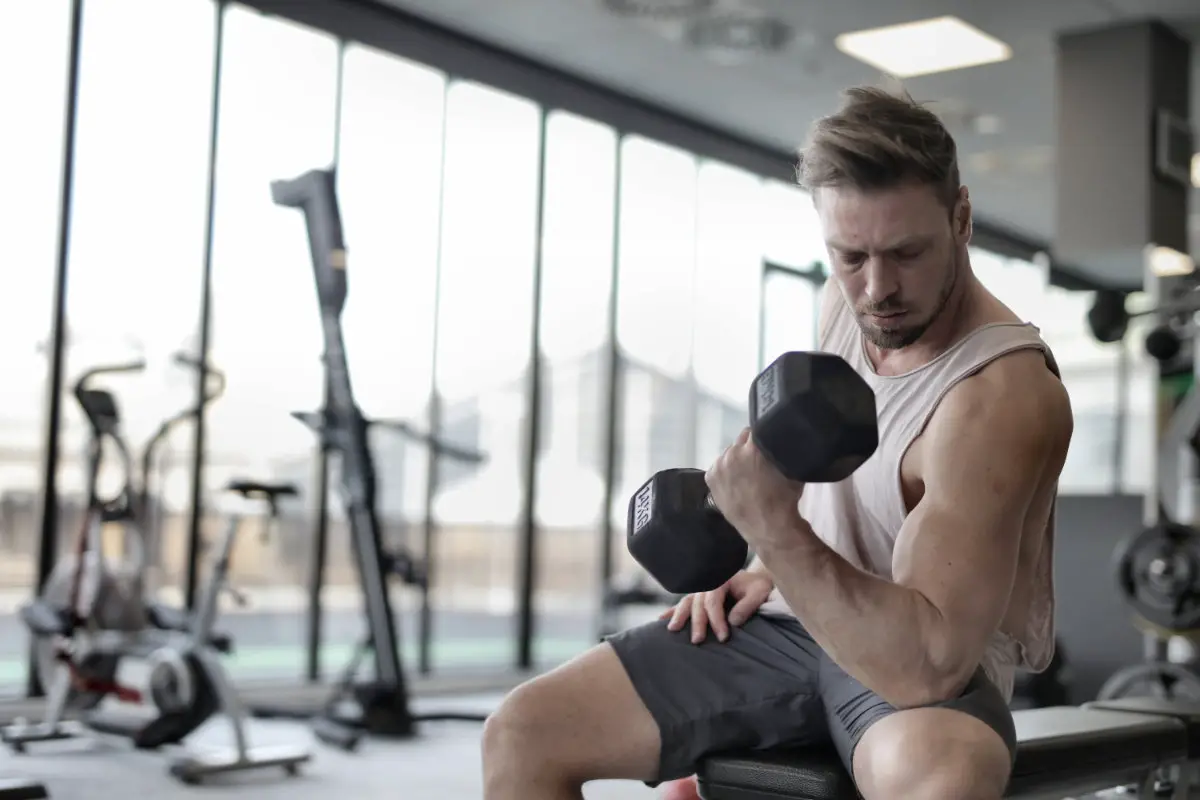Did you know preacher curls were used back in the early 60s and gained popularity around 1965?
As you are on your journey for a bigger, better physique, there will come a time where you want to maximize your efforts. You’ve gotten consistent with your training, you eat decent for the most part, and you are starting to see results.
Now is the time to start fine-tuning your approach and dialing in on what works best for you. If you’re in the market for a new set of arms, preacher curls could be an integral tool in your muscle building toolbox.
Curl Movements Are Important — Especially Preacher Curls
Although triceps take up roughly two-thirds of the mass on your chicken wing arms, curl movements are essential to getting massive arms.
Bicep Anatomy
Your biceps brachii is a muscle on the front part of the upper arm. The bicep muscle has a long head and a short head that work together as a single muscle. This muscle attaches to your bones via tendons. As your bicep contracts, it will pull your forearm up and rotate outward.
Two tendons that connect your bicep:
- Distal Bicep Tendon – This tendon attaches your bicep to your forearm bones — aka your radius and ulna.
- Proximal Bicep Tendon – This tendon connects to the shoulder joint in two places.
Your biceps also look bigger when your brachialis and brachioradialis are developed. The brachialis is also known as the Teichmann muscle and it also flexes the elbow. Hammer curls are a great exercise to build a stronger brachialis.
The brachioradialis is the muscle that you see in the top of your forearm. Reverse curls — or curls where your palms face down — are great at building this muscle.

Did you know properly performing heavy hammer curls help you bench more?
The History of the Preacher Curl
Back in the 1950s, Vince Gironda, aka The Iron Guru introduced the idea of preacher curls. This exercise was a flop with the general public until the first Mr. Olympia Larry Scott credited preacher curls to attributing to his massive 20 inch biceps. Since then, every bro and pro bodybuilder use preacher curls in their muscle building arsenal.

What Exactly is Considered a Preacher Curl?
A preacher curl is simply a bicep curl where your upper arms rest on an angled bench. This forces you to basically “flex at your elbows” and generate all power from your biceps directly. The official name for the preacher curl bench is a Scott Bench. Named after the great Larry Scott mentioned above.

Preacher curls deter cheating the weight because the bench keeps your arms from moving. This exercise isolates the bicep, which means you don’t need to use a lot of weight. In fact, you’ll be surprised at how little you can safely lift if you’ve never tried them.
Curls are simple, versatile, and a tried and true way to build biceps. Performing different curl variations allows you to chisel your way to more gains.
How to Perform a Preacher Curl for Beefy Biceps
Check out this video explaining how to perform a preacher curl. It’s informative and to the point — it’s a 2.5 minute video.
You’ll have much better results if you maintain great form and focus on progression. Building the physique of your dreams is a journey, not an overnight sensation.
Looking to lose weight in your face while you build bigger biceps? Check out this article.
Preacher Curl Exercise Tips
Here are a few tips to getting the most out of your preacher curl sets.
- Set the bench height properly – You want to have your arm pit resting on at the top of the bench, with the back of your arms resting on the bench.
- Keep your elbows glued to the bench – When you perform your curls, you want your elbows to stay on the pad.
- Keep your head in the game – Preacher curls isolate your bicep and eliminates any body movement or “cheating” the rep.
- Pick the right weight – This isn’t an ego lift. Treat this as your finishing chisel for your physique. Feel each muscle fiber burn as you complete your reps.
- Time Under Tension – Maintaining stress on your bicep throughout the whole lift is important for muscle growth. Check out this 2016 study that suggests increasing the eccentric phase has positive results, but here is a study from 2019 that concluded having a negligible effect.
Use Negatives for Growth
If you have a workout partner, or a spotter, you could perform negatives. Negatives focus on the eccentric portion of your lift.
Example: You can curl 30s for 12, struggling to get the last couple of reps. You would have a partner hand off a 40 or 50 pound dumbbell while your arm is in the flexed position, and you would slowly let your arm straighten. You won’t be able to curl it back up, but you are around 1.75 times stronger on the eccentric portion of your lift than the concentric.
Research has suggested that increasing your eccentric capacity increases concentric potential. This is basically a transfer of gains that can help you break through your workout plateau.
How Can I Perform Preacher Curls at Home?
If you have the money, I’d suggest buying a Scott bench. Fortunately, there are many multi-function weight benches on Amazon that have a version of a Scott pad you can use for preacher curls. They aren’t great compared to your local gym, but they will get the job done. If you have an adjustable bench, you can set the back at a steep angle and use that as the arm rest.
Once you have your bench setup, grab a weight or your resistance band. You can pick up a cheap set of adjustable dumbbells so you can lift at home. Browse Craigslist and other marketplaces for people selling or giving away gym equipment. If you take your health seriously, you can spend a little cash and buy some adjustable dumbbells on Amazon right now. This is a great alternative to all of the sketchy dumbbells that I’ve had to use over the years.
Try Concentration Curls at Home
If you simply don’t have anything to use as a Scott bench, concentration curls are another great exercise that isolates the bicep. You still will need a weight or resistance band, but the “arm rest” is your knee. Your upper arm and shoulder should remain stationary while you perform the curl. You may have to bend or hunch over some to perform this exercise properly. Check out this video to get an in-depth how-to perform a concentration curl.

When I lift in my home gym, I generally will do concentration curls due to not having a Scott bench. If I’m working arms and at a gym, I’ll get some preacher curls, preacher hammer curls, and preacher zottman curls in before I leave.
Preacher Curl Benefits
Preacher curls are great because they isolate your bicep by eliminating any body movement. They are a great isolation movement that you can perform toward the end of your workout. If you have access to the proper equipment, this is a relatively comfortable exercise — you’ll only feel the burn and pump in your bicep while you sit down and lean on a pad. If you don’t already have a workout plan, a simple 4 sets of 12 reps would be adequate.
Using dumbbells allows you to do any curl variation you like — hammer curls, alternating curls — and completely isolate the muscle. You are able to let your muscles and limbs move naturally, unlike a barbell.
Preacher Curl Drawbacks
- If you screw around and perform the exercise incorrectly, you’re asking to hurt yourself. From pesky wrist tweaks to a popped bicep, the preacher curl does have some drawbacks if you perform the exercise incorrectly.
- In order to perform this how it was intended to e performed, you have to have a piece of equipment. This is why I personally prefer concentration curls.
Wrapping It Up
Preacher curls help you build a bigger biceps when performed properly. There are plenty of variations of the traditional preacher curls that can target weak points in your biceps and help you build a fuller looking bicep.
This is not an ego lift. You can get hurt if you do not use some common sense and decent form.
Why go to the gym if you are going to piss away your efforts?
